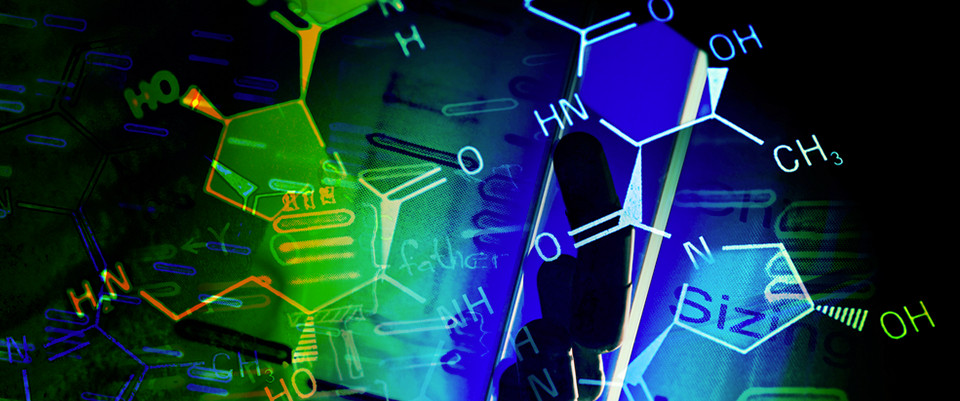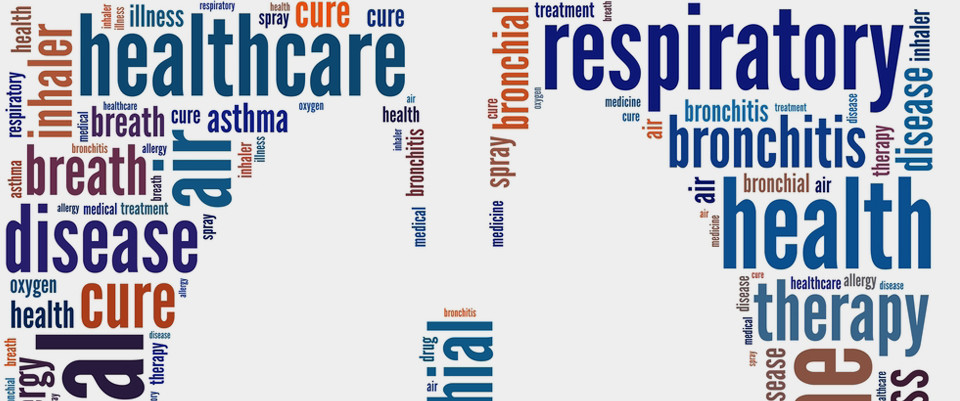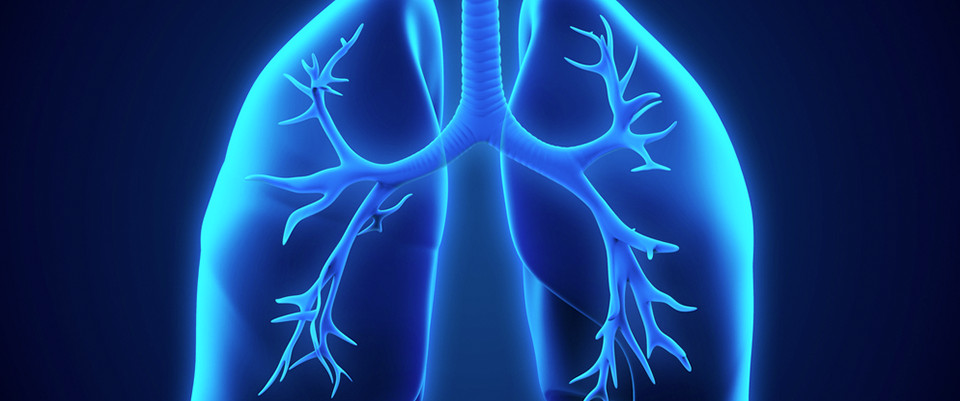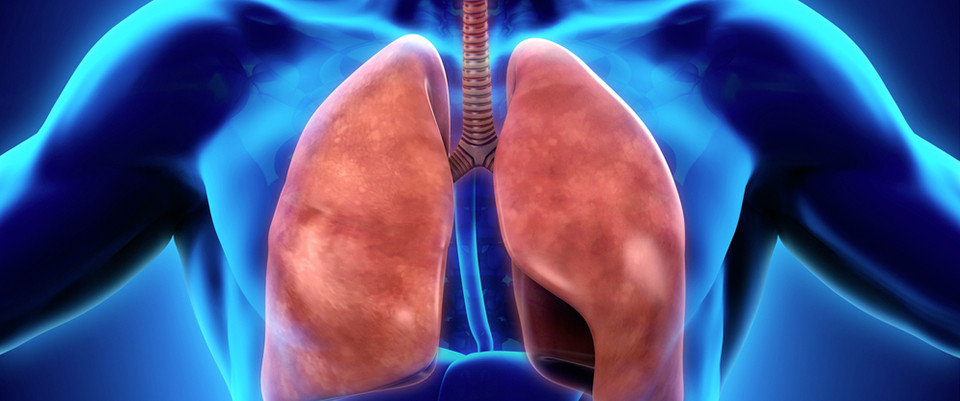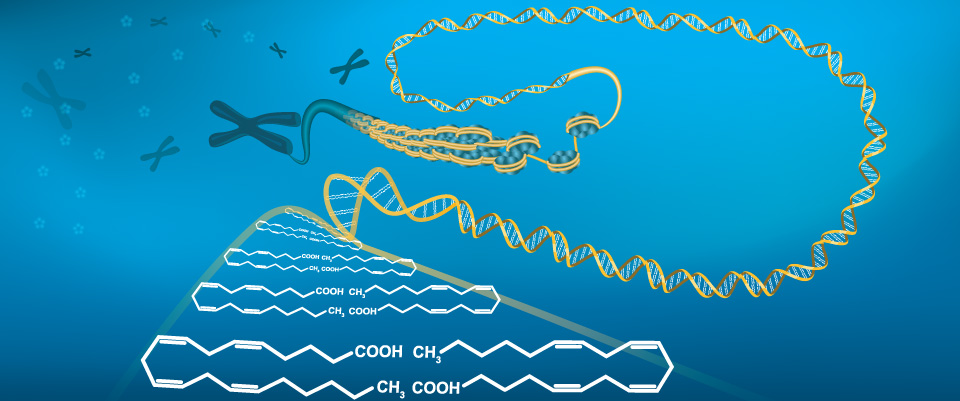PubMed
metabolomics; +34 new citations
34 new pubmed citations were retrieved for your search.
Click on the search hyperlink below to display the complete search results:
metabolomics
These pubmed results were generated on 2020/09/22PubMed comprises more than millions of citations for biomedical literature from MEDLINE, life science journals, and online books.
Citations may include links to full-text content from PubMed Central and publisher web sites.
metabolomics; +34 new citations
34 new pubmed citations were retrieved for your search.
Click on the search hyperlink below to display the complete search results:
metabolomics
These pubmed results were generated on 2020/09/22PubMed comprises more than millions of citations for biomedical literature from MEDLINE, life science journals, and online books.
Citations may include links to full-text content from PubMed Central and publisher web sites.
Targeted and untargeted metabolomics provide insight into the consequences of glycine-N-methyltransferase deficiency including the novel finding of defective immune function.
Targeted and untargeted metabolomics provide insight into the consequences of glycine-N-methyltransferase deficiency including the novel finding of defective immune function.
Physiol Rep. 2020 Sep;8(18):e14576
Authors: Eudy BJ, McDermott CE, Liu X, da Silva RP
Abstract
Fatty liver disease is increasing along with the prevalence of obesity and type-2 diabetes. Hepatic fibrosis is a major health complication for which there are no efficacious treatment options available. A better understanding of the fundamental mechanisms that contribute to the accumulation of fibrosis is needed. Glycine-N-methyltransferase (GNMT) is a critical enzyme in one-carbon metabolism that serves to regulate methylation and remethylation reactions. GNMT knockout (GNMT-/- ) mice display spontaneous hepatic fibrosis and later develop hepatocellular carcinoma. Previous literature supports the idea that hypermethylation as a consequence of GNMT deletion contributes to the hepatic phenotype observed. However, limited metabolomic information is available and the underlying mechanisms that contribute to hepatic fibrogenesis in GNMT-/- mice are still incomplete. Therefore, our goals were to use dietary intervention to determine whether increased lipid load exacerbates steatosis and hepatic fibrosis in this model and to employ both targeted and untargeted metabolomics to further understand the metabolic consequences of GNMT deletion. We find that GNMT mice fed high-fat diet do not accumulate more lipid or fibrosis in the liver and are in fact resistant to weight gain. Metabolomics analysis confirmed that pan-hypermethylation occurs in GNMT mice resulting in a depletion of nicotinamide intermediate metabolites. Further, there is a disruption in tryptophan catabolism that prevents adequate immune cell activation in the liver. The chronic cellular damage cannot be appropriately cleared due to a lack of immune checkpoint activation. This mouse model is an excellent example of how a disruption in small molecule metabolism can significantly impact immune function.
PMID: 32951289 [PubMed - as supplied by publisher]
Urbanization in China is associated with pronounced perturbation of plasma metabolites.
Urbanization in China is associated with pronounced perturbation of plasma metabolites.
Metabolomics. 2020 Sep 19;16(10):103
Authors: Wang Y, Sha W, Wang H, Howard AG, Tsilimigras MCB, Zhang J, Su C, Wang Z, Zhang B, Fodor AA, Gordon-Larsen P
Abstract
INTRODUCTION: Urbanization is associated with major changes in environmental and lifestyle exposures that may influence metabolic signatures.
OBJECTIVES: We investigated cross-sectional urban and rural differences in plasma metabolome analyzed by liquid chromatography/mass spectrometry platform in 500 Chinese adults aged 25-68 years from two neighboring southern Chinese provinces.
METHODS: We first examined the overall metabolome differences by urban and rural residential location, using Orthogonal Partial Least Squares Discriminant Analysis (OPLS-DA) and random forest classification. We then tested the association between urbanization status and individual metabolites using a linear regression adjusting for age, sex, and province and conducted pathway analysis (Fisher's exact test) to identify metabolic pathways differed by urbanization status.
RESULTS: We observed distinct overall metabolome by urbanization status in OPLS-DA and random forest classification. Using linear regression, out of a total of 1108 unique metabolite features identified in this sample, we found that 266 metabolites were differed by urbanization status (positive false discovery rate-adjusted p-value, q-value < 0.05). For example, the following metabolites were positively associated with urbanization status: caffeine metabolites from xanthine metabolism, hazardous pollutants like 4-hydroxychlorothalonil and perfluorooctanesulfonate, and metabolites implicated in cardiometabolic diseases, such as branched-chain amino acids. In pathway analysis, we found that xanthine metabolism pathways differed by urbanization status (q-value = 1.64E-04).
CONCLUSION: We detected profound differences in host metabolites by urbanization status. Urban residents were characterized by metabolites signaling caffeine metabolism and toxic pollutants and metabolites on known pathways to cardiometabolic disease risks, compared to their rural counterparts. Our findings highlight the importance of considering urbanization in metabolomics analysis.
PMID: 32951074 [PubMed - as supplied by publisher]
Comparative phytochemical profile of the elephant garlic (Allium ampeloprasum var. holmense) and the common garlic (Allium sativum) from the Val di Chiana area (Tuscany, Italy) before and after in vitro gastrointestinal digestion.
Comparative phytochemical profile of the elephant garlic (Allium ampeloprasum var. holmense) and the common garlic (Allium sativum) from the Val di Chiana area (Tuscany, Italy) before and after in vitro gastrointestinal digestion.
Food Chem. 2020 Sep 13;338:128011
Authors: Ceccanti C, Rocchetti G, Lucini L, Giuberti G, Landi M, Biagiotti S, Guidi L
Abstract
This study is aimed to comparatively investigate the phytochemical profiles, focusing on the nutritional and phytochemical properties of common garlic (Allium sativum L.; CG) and elephant garlic (EG) (Allium ampeloprasum var. holmense) collected from the Val di Chiana area (Tuscany, Italy). The results showed a lower amount of fibers, demonstrating a higher digestibility of the bulb, and sulfur-containing compounds in EG rather than in CG. Untargeted metabolomic profiling followed by supervised and unsupervised statistics allowed understanding the differences in phytochemical composition among the two bulbs, both as raw bulbs, processed following the in vitro gastrointestinal digestion process. Typical sulfur-containing compounds, such as alliin and N-gamma-glutamyl-S-allyl cysteine, could notably be detected in lower amounts in EG. EG maintains a distinct phytochemical signature during in vitro gastrointestinal digestion. Our findings support the distinct sensorial attributes of the bulbs.
PMID: 32950006 [PubMed - as supplied by publisher]
Potential causal role of l-glutamine in sickle cell disease painful crises: A Mendelian randomization analysis.
Potential causal role of l-glutamine in sickle cell disease painful crises: A Mendelian randomization analysis.
Blood Cells Mol Dis. 2020 Sep 10;86:102504
Authors: Iboudo Y, Garrett ME, Bartolucci P, Brugnara C, Clish CB, Hirschhorn JN, Galactéros F, Ashley-Koch AE, Telen MJ, Lettre G
Abstract
In a recent clinical trial, the metabolite l-glutamine was shown to reduce painful crises in sickle cell disease (SCD) patients. To support this observation and identify other metabolites implicated in SCD clinical heterogeneity, we profiled 129 metabolites in the plasma of 705 SCD patients. We tested correlations between metabolite levels and six SCD-related complications (painful crises, cholecystectomy, retinopathy, leg ulcer, priapism, aseptic necrosis) or estimated glomerular filtration rate (eGFR), and used Mendelian randomization (MR) to assess causality. We found a potential causal relationship between l-glutamine levels and painful crises (N = 1278, odds ratio (OR) [95% confidence interval] = 0.68 [0.52-0.89], P = 0.0048). In two smaller SCD cohorts (N = 299 and 406), the protective effect of l-glutamine was observed (OR = 0.82 [0.50-1.34]), although the MR result was not significant (P = 0.44). We identified 66 significant correlations between the levels of other metabolites and SCD-related complications or eGFR. We tested these correlations for causality using MR analyses and found no significant causal relationship. The baseline levels of quinolinic acid were associated with prospectively ascertained survival in SCD patients, and this effect was dependent on eGFR. Metabolomics provide a promising approach to prioritize small molecules that may serve as biomarkers or drug targets in SCD.
PMID: 32949984 [PubMed - as supplied by publisher]
Comprehensive analysis of metabolic alterations in Schizochytrium sp. strains with different DHA content.
Comprehensive analysis of metabolic alterations in Schizochytrium sp. strains with different DHA content.
J Chromatogr B Analyt Technol Biomed Life Sci. 2020 May 26;1160:122193
Authors: Yang J, Song X, Wang L, Cui Q
Abstract
Along with the daily growth of the market requirements for docosahexaenoic acid (DHA) algae oil, a large DHA ingredients are needed to ensure worldwide supply. Undoubtedly a high-productive strain would be the prerequisite for high quality and yield. A comprehensive understanding of the processes of DHA synthesis from glycolysis to the lipid accumulation would be benefit to achieve the final optimization of DHA production. In this study, we comprehensively characterized the metabolic profiles of a Schizochytrium sp. strain, which has higher DHA content and different biomass amino acid composition compared with the wild type to explore the affected pathways and underlying mechanism. Combined with the multivariate statistical analysis, twenty-two differential metabolites were screened as relevant to the discrepancy between two strains. The results showed relatively downregulated glycolysis and saturated fatty acids (SFA) synthesis, and upregulated TCA cycle, amino acids and polyunsaturated fatty acids (PUFA) synthesis in DHA high yield strain. The current study provide a terminal picture of gene regulation from downstream metabolism and demonstrate the advantage of metabolomics in characterizing metabolic status which in turn could provide effective information for the metabolic engineering.
PMID: 32949924 [PubMed - as supplied by publisher]
Multi-omics analysis reveals that co-exposure to phthalates and metals disturbs urea cycle and choline metabolism.
Multi-omics analysis reveals that co-exposure to phthalates and metals disturbs urea cycle and choline metabolism.
Environ Res. 2020 Sep 16;:110041
Authors: Papaioannou N, Distel E, de Oliveira E, Gabriel C, Frydas IS, Anesti O, Attignon EA, Odena A, Díaz R, Aggerbeck Μ, Horvat M, Barouki R, Karakitsios S, Sarigiannis DA
Abstract
This study aimed to evaluate the response of HepaRG cells after co-exposure to phthalates and heavy metals, using a high-dimensional biology paradigm (HDB). Liver is the main metabolism site for the majority of xenobiotics. For this reason, the HepaRG cell line was used as an in vitro model, and cells were exposed to two characteristic mixtures of phthalates and heavy metals containing phthalates (DEHP, DiNP, BBzP) and metals (lead, methylmercury, total mercury) in a concentration-dependent manner. The applied chemical mixtures were selected as the most abundant pollutants in the REPRO_PL and PHIME cohorts, which were studied using the exposome-wide approach in the frame of the EU project HEALS. These studies investigated the environmental causation of neurodevelopmental disorders in neonates and across Europe. The INTEGRA computational platform was used for the calculation of the effective concentrations of the chemicals in the liver through extrapolation from human biomonitoring data and this dose (and a ten-times higher one) was applied to the hepatocyte model. Multi-omics analysis was performed to reveal the genes, proteins, and metabolites affected by the exposure to these chemical mixtures.By extension, we could detect the perturbed metabolic pathways. The generated data were analyzed using advanced bioinformatic tools following the HEALS connectivity paradigm for multi-omics pathway analysis. Co-mapped transcriptomics and proteomics data showed that co-exposure to phthalates and heavy metals leads to perturbations of the urea cycle due to differential expression levels of arginase-1 and -2, argininosuccinate synthase, carbamoyl-phosphate synthase, ornithine carbamoyltransferase, and argininosuccinate lyase. Joint pathway analysis of proteomics and metabolomics data revealed that the detected proteins and metabolites, choline phosphate cytidylyltransferase A, phospholipase D3, group XIIA secretory phospholipase A2, α-phosphatidylcholine, and the a 1,2-diacyl-sn-glycero-3-phosphocholine, are responsible for the homeostasis of the metabolic pathways phosphatidylcholine biosynthesis I, and phospholipases metabolism. The urea, phosphatidylcholine biosynthesis I and phospholipase metabolic pathways are of particular interest since they have been identified also in human samples from the REPRO_PL and PHIME cohorts using untargeted metabolomics analysis and have been associated with impaired psychomotor development in children at the age of two. In conclusion, this study provides the mechanistic evidence that co-exposure to phthalates and metals disturb biochemical processes related to mitochondrial respiration during critical developmental stages, which are clinically linked to neurodevelopmental perturbations.
PMID: 32949613 [PubMed - as supplied by publisher]
On sample preparation methods for fermented beverage VOCs profiling by GCxGC-TOFMS.
Related Articles
On sample preparation methods for fermented beverage VOCs profiling by GCxGC-TOFMS.
Metabolomics. 2020 Sep 19;16(10):102
Authors: Zhang P, Carlin S, Lotti C, Mattivi F, Vrhovsek U
Abstract
INTRODUCTION: Aromas and tastes have crucial influences on the quality of fermented beverages. The determination of aromatic compounds requires global non-targeted profiling of the volatile organic compounds (VOCs) in the beverages. However, experimental VOC profiling result depends on the chosen VOC collection method.
OBJECTIVES: This study aims to observe the impact of using different sample preparation techniques [dynamic headspace (DHS), vortex-assisted liquid-liquid microextraction (VALLME), multiple stir bar sorptive extraction (mSBSE), solid phase extraction (SPE), and solid phase micro-extraction (SPME)] to figure out the most suitable sample preparation protocol for profiling the VOCs from fermented beverages.
METHODS: Five common sample preparation methods were studied with beer, cider, red wine, and white wine samples. After the sample preparation, collected VOCs were analyzed by two-dimensional gas chromatography coupled with time of flight mass spectrometry (GCxGC-TOFMS).
RESULTS: GCxGC oven parameters can be optimized with the Box-Behnken surface response model and response measure on peak dispersion. Due to the unavoidable column and detector saturation during metabolomic analysis, errors may happen during mass spectrum construction. Profiling results obtained with different sample preparation methods show considerable variance. Common findings occupy a small fraction of total annotated VOCs. For known fermentative aromas, best coverage can be reached by using SPME together with SPE for beer, and VALLME for wine and cider.
CONCLUSIONS: GCxGC-TOFMS is a promising tool for non-targeted profiling on VOCs from fermented beverages. However, a proper data processing protocol is lacking for metabolomic analysis. Each sample preparation method has a specific profiling spectrum on VOC profiling. The coverage of the VOC metabolome can be improved by combining complementary methods.
PMID: 32949264 [PubMed - as supplied by publisher]
The free amino acid profiles and metabolic biomarkers of predicting the chemotherapeutic response in advanced sarcoma patients.
Related Articles
The free amino acid profiles and metabolic biomarkers of predicting the chemotherapeutic response in advanced sarcoma patients.
Clin Transl Oncol. 2020 Sep 18;:
Authors: Jia B, Wang W, Lin S, Shi L, Li Y, Gu Y, Gao F, Qin Y
Abstract
PURPOSE: Metabolomics is an emerging field in cancer research. Plasma free amino acid profiles (PFAAs) have shown different features in various cancers, but the characteristic in advanced sarcoma remains unclear. We aimed to uncover the specific PFAAs in advanced sarcoma and to find the relationship between the altering of PFAAs and response to chemotherapy.
PATIENTS AND METHODS: We analyzed the differences in PFAAs between 23 sarcoma patients and 30 healthy subjects basing on liquid chromatography-tandem mass spectrometry (LC-MS/MS). Then, we compared the dynamics of PFAAs after chemotherapy between improvement group and deterioration group.
RESULTS: We identified seven biological differential amino acids and four pathways which were perturbed in the sarcoma patients compared with healthy subjects. After one cycle chemotherapy, the levels of γ-aminobutyric acid (GABA) and carnosine (Car) decreased significantly in the improvement group but not in deterioration group. The levels of α-aminobutyric acid (Abu) increased significantly in the deterioration group but not in the improvement group.
CONCLUSION: Our study suggests the potential specific PFAAs in sarcoma patients. The unusual amino acids and metabolic pathways may provide ideas for clinical drugs targeting therapy. Three amino acids including Car, GABA and Abu may be metabolic biomarkers playing a role in dynamic monitoring of the therapeutic effect.
PMID: 32948983 [PubMed - as supplied by publisher]
Multi-omics study for interpretation of genome-wide association study.
Related Articles
Multi-omics study for interpretation of genome-wide association study.
J Hum Genet. 2020 Sep 18;:
Authors: Akiyama M
Abstract
Genome-wide association studies (GWASs) have identified thousands of genetic loci associated with complex traits, including a wide variety of diseases. Despite the successful identification of associated loci, interpreting GWAS findings remains challenging and requires other biological resources. Omics, including genomics, transcriptomics, proteomics, metabolomics, and epigenomics, are increasingly used in a broad range of research fields. Integrative analyses applying GWAS with these omics data are expected to expand our knowledge of complex traits and provide insight into the pathogenesis of complex diseases and their causative factors. Recently, associations between genetic variants and omics data have been comprehensively evaluated, providing new information on the influence of genetic variants on omics. Furthermore, recent advances in analytic methods, including single-cell technologies, have revealed previously unknown disease mechanisms. To advance our understanding of complex traits, integrative analysis using GWAS with multi-omics data is needed. In this review, I describe successful examples of integrative analyses based on omics and GWAS, discuss the limitations of current multi-omics analyses, and provide a perspective on future integrative studies.
PMID: 32948838 [PubMed - as supplied by publisher]
Dengue virus dominates lipid metabolism modulations in Wolbachia-coinfected Aedes aegypti.
Related Articles
Dengue virus dominates lipid metabolism modulations in Wolbachia-coinfected Aedes aegypti.
Commun Biol. 2020 Sep 18;3(1):518
Authors: Koh C, Islam MN, Ye YH, Chotiwan N, Graham B, Belisle JT, Kouremenos KA, Dayalan S, Tull DL, Klatt S, Perera R, McGraw EA
Abstract
Competition between viruses and Wolbachia for host lipids is a proposed mechanism of Wolbachia-mediated virus blocking in insects. Yet, the metabolomic interaction between virus and symbiont within the mosquito has not been clearly defined. We compare the lipid profiles of Aedes aegypti mosquitoes bearing mono- or dual-infections of the Wolbachia wMel strain and dengue virus serotype 3 (DENV3). We found metabolic signatures of infection-induced intracellular events but little evidence to support direct competition between Wolbachia and virus for host lipids. Lipid profiles of dual-infected mosquitoes resemble those of DENV3 mono-infected mosquitoes, suggesting virus-driven modulation dominates over that of Wolbachia. Interestingly, knockdown of key metabolic enzymes suggests cardiolipins are host factors for DENV3 and Wolbachia replication. These findings define the Wolbachia-DENV3 metabolic interaction as indirectly antagonistic, rather than directly competitive, and reveal new research avenues with respect to mosquito × virus interactions at the molecular level.
PMID: 32948809 [PubMed - as supplied by publisher]
Metabolic Profiling of a Porcine Combat Trauma-Injury Model Using NMR and Multi-Mode LC-MS Metabolomics-A Preliminary Study.
Related Articles
Metabolic Profiling of a Porcine Combat Trauma-Injury Model Using NMR and Multi-Mode LC-MS Metabolomics-A Preliminary Study.
Metabolites. 2020 Sep 16;10(9):
Authors: Laserna AKC, Lai Y, Fang G, Ganapathy R, Atan MSBM, Lu J, Wu J, Uttamchandani M, Moochhala SM, Li SFY
Abstract
Profiles of combat injuries worldwide have shown that penetrating trauma is one of the most common injuries sustained during battle. This is usually accompanied by severe bleeding or hemorrhage. If the soldier does not bleed to death, he may eventually succumb to complications arising from trauma hemorrhagic shock (THS). THS occurs when there is a deficiency of oxygen reaching the organs due to excessive blood loss. It can trigger massive metabolic derangements and an overwhelming inflammatory response, which can subsequently lead to the failure of organs and possibly death. A better understanding of the acute metabolic changes occurring after THS can help in the development of interventional strategies, as well as lead to the identification of potential biomarkers for rapid diagnosis of hemorrhagic shock and organ failure. In this preliminary study, a metabolomic approach using the complementary platforms of nuclear magnetic resonance (NMR) spectroscopy and liquid chromatography coupled with mass spectrometry (LC-MS) was used to determine the metabolic changes occurring in a porcine model of combat trauma injury comprising of penetrating trauma to a limb with hemorrhagic shock. Several metabolites associated with the acute-phase reaction, inflammation, energy depletion, oxidative stress, and possible renal dysfunction were identified to be significantly changed after a thirty-minute shock period.
PMID: 32948079 [PubMed - as supplied by publisher]
Absorption and interaction mechanisms of uranium & cadmium in purple sweet potato(Ipomoea batatas L.).
Related Articles
Absorption and interaction mechanisms of uranium & cadmium in purple sweet potato(Ipomoea batatas L.).
J Hazard Mater. 2020 Dec 05;400:123264
Authors: Lai JL, Zhang-Xuan D, Xiao-Hui JI, Xue-Gang L
Abstract
The purpose of this study was to reveal the absorption and interaction mechanisms of uranium (U) & cadmium (Cd) in corps. Purple sweet potato (Ipomoea batatas L.) was selected as the experimental material. The absorption behavior of U and Cd in this crop and the effects on mineral nutrition were analyzed in a pot experiment. The interactions between U and Cd in purple sweet potato were analyzed using UPLC-MS metabolome analysis. The pot experiment confirmed that the root tuber of the purple sweet potato had accumulated U (1.68-5.16 mg kg-1) and Cd (0.78-2.02 mg kg-1) and would pose a health risk if consumed. Both U and Cd significantly interfered with the mineral nutrient of the roots. Metabolomics revealed that a total of 4865 metabolites were identified in roots. 643 (419 up; 224 down), 526 (332 up; 194 down) and 634 (428 up; 214 down) different metabolites (DEMs) were identified in the U, Cd, and U + Cd exposure groups. Metabolic pathway analysis showed that U and Cd induced the expression of plant hormones (the first messengers) and cyclic nucleotides (cAMP and cGMP, second messengers) in cells and regulated the primary/secondary metabolism of roots to induce resistance to U and Cd toxicity.
PMID: 32947695 [PubMed - as supplied by publisher]
Root response in Pisum sativum under naproxen stress: Morpho-anatomical, cytological, and biochemical traits.
Related Articles
Root response in Pisum sativum under naproxen stress: Morpho-anatomical, cytological, and biochemical traits.
Chemosphere. 2020 Nov;258:127411
Authors: Svobodníková L, Kummerová M, Zezulka Š, Babula P, Sendecká K
Abstract
Non-steroidal anti-inflammatory drugs as an important group of emerging environmental contaminants in irrigation water and soils can influence biochemical and physiological processes essential for growth and development in plants as non-target organisms. Plants are able to take up, transport, transform, and accumulate drugs in the roots. Root biomass in ten-days old pea plants was lowered by 6% already under 0.1 mg/L naproxen (NPX) due to a lowered number of lateral roots, although 0.5 mg/L NPX stimulated the total root length by 30% as against control. Higher section area (by 40%) in root tip, area of xylem (by 150%) or stele-to-section ratio (by 10%) in zone of maturation, and lower section area in zone of lateral roots (by 18%) prove the changes in primary root anatomy and its earlier differentiation at 10 mg/L NPX. Accumulated NPX (up to 10 μg/g DW at 10 mg/L) and products of its metabolization in roots increased the amounts of hydrogen peroxide (by 33%), and superoxide (by 62%), which was reflected in elevated lipid peroxidation (by 32%), disruption of membrane integrity (by 89%) and lowering both oxidoreductase and dehydrogenase activities (by up to 40%). Elevated antioxidant capacity (SOD, APX, and other molecules) under low treatments decreased at 10 mg/L NPX (both by approx. 30%). Naproxen was proved to cause changes at both cellular and tissue levels in roots, which was also reflected in their anatomy and morphology. Higher environmental loading through drugs thus can influence even the root function.
PMID: 32947668 [PubMed - as supplied by publisher]
Discovery of a NAPE-PLD inhibitor that modulates emotional behavior in mice.
Related Articles
Discovery of a NAPE-PLD inhibitor that modulates emotional behavior in mice.
Nat Chem Biol. 2020 06;16(6):667-675
Authors: Mock ED, Mustafa M, Gunduz-Cinar O, Cinar R, Petrie GN, Kantae V, Di X, Ogasawara D, Varga ZV, Paloczi J, Miliano C, Donvito G, van Esbroeck ACM, van der Gracht AMF, Kotsogianni I, Park JK, Martella A, van der Wel T, Soethoudt M, Jiang M, Wendel TJ, Janssen APA, Bakker AT, Donovan CM, Castillo LI, Florea BI, Wat J, van den Hurk H, Wittwer M, Grether U, Holmes A, van Boeckel CAA, Hankemeier T, Cravatt BF, Buczynski MW, Hill MN, Pacher P, Lichtman AH, van der Stelt M
Abstract
N-acylethanolamines (NAEs), which include the endocannabinoid anandamide, represent an important family of signaling lipids in the brain. The lack of chemical probes that modulate NAE biosynthesis in living systems hamper the understanding of the biological role of these lipids. Using a high-throughput screen, chemical proteomics and targeted lipidomics, we report here the discovery and characterization of LEI-401 as a CNS-active N-acylphosphatidylethanolamine phospholipase D (NAPE-PLD) inhibitor. LEI-401 reduced NAE levels in neuroblastoma cells and in the brain of freely moving mice, but not in NAPE-PLD KO cells and mice, respectively. LEI-401 activated the hypothalamus-pituitary-adrenal axis and impaired fear extinction, thereby emulating the effect of a cannabinoid CB1 receptor antagonist, which could be reversed by a fatty acid amide hydrolase inhibitor. Our findings highlight the distinctive role of NAPE-PLD in NAE biosynthesis in the brain and suggest the presence of an endogenous NAE tone controlling emotional behavior.
PMID: 32393901 [PubMed - indexed for MEDLINE]
Quantitative Analysis of the Cellular Lipidome of Saccharomyces Cerevisiae Using Liquid Chromatography Coupled with Tandem Mass Spectrometry.
Related Articles
Quantitative Analysis of the Cellular Lipidome of Saccharomyces Cerevisiae Using Liquid Chromatography Coupled with Tandem Mass Spectrometry.
J Vis Exp. 2020 03 08;(157):
Authors: Mohammad K, Jiang H, Hossain MI, Titorenko VI
Abstract
Lipids are structurally diverse amphipathic molecules that are insoluble in water. Lipids are essential contributors to the organization and function of biological membranes, energy storage and production, cellular signaling, vesicular transport of proteins, organelle biogenesis, and regulated cell death. Because the budding yeast Saccharomyces cerevisiae is a unicellular eukaryote amenable to thorough molecular analyses, its use as a model organism helped uncover mechanisms linking lipid metabolism and intracellular transport to complex biological processes within eukaryotic cells. The availability of a versatile analytical method for the robust, sensitive, and accurate quantitative assessment of major classes of lipids within a yeast cell is crucial for getting deep insights into these mechanisms. Here we present a protocol to use liquid chromatography coupled with tandem mass spectrometry (LC-MS/MS) for the quantitative analysis of major cellular lipids of S. cerevisiae. The LC-MS/MS method described is versatile and robust. It enables the identification and quantification of numerous species (including different isobaric or isomeric forms) within each of the 10 lipid classes. This method is sensitive and allows identification and quantitation of some lipid species at concentrations as low as 0.2 pmol/µL. The method has been successfully applied to assessing lipidomes of whole yeast cells and their purified organelles. The use of alternative mobile phase additives for electrospray ionization mass spectrometry in this method can increase the efficiency of ionization for some lipid species and can be therefore used to improve their identification and quantitation.
PMID: 32202524 [PubMed - indexed for MEDLINE]
Plasma metabolite biomarkers related to secondary hyperparathyroidism and parathyroid hormone.
Related Articles
Plasma metabolite biomarkers related to secondary hyperparathyroidism and parathyroid hormone.
J Cell Biochem. 2019 09;120(9):15766-15775
Authors: Shen Q, Xiang W, Ye S, Lei X, Wang L, Jia S, Shao X, Weng C, Shen X, Wang Y, Feng S, Qu L, Wang C, Chen J, Zhang P, Jiang H
Abstract
BACKGROUND: Hyperphosphatemia, hypocalcemia, and elevation of parathyroid hormone (PTH) are typical abnormalities of uremic patients with Secondary hyperparathyroidism (SHPT). However, metabolic imbalance associated with SHPT is not well understood.
METHODS: A total of 15 SHPT patients with an intact parathyroid hormone (iPTH) level > 600 pg/mL were set as preoperative (PR) group, 15 age- and gender-matched controls who had undergone parathyroidectomy plus forearm transplantation because of hyperparathyroidism and achieved an iPTH level <150 pg/mL were set as postoperative (PO) group. Metabolite profiling of these 30 uremic patients and five healthy controls (HC) was performed using ultra performance liquid chromatography-mass spectrometry.
RESULTS: Five differential metabolites, including allyl isothiocyanate, L-phenylalanine, D-Aspartic acid, indoleacetaldehyde, and D-galactose correlated with PTH were identified in this study. Taking them as a biomarker signature, PR group can be distinguished from HC group with an area under the curve (AUC) of 0.947 (95% CI, 0.76-1) and PO group with an AUC of 0.6 (95% CI, 0.38-0.807).
CONCLUSIONS: The serum metabolome correlated with PTH is successfully demonstrated for a better understanding of the pathogenesis of SHPT.
PMID: 31069832 [PubMed - indexed for MEDLINE]
metabolomics; +21 new citations
21 new pubmed citations were retrieved for your search.
Click on the search hyperlink below to display the complete search results:
metabolomics
These pubmed results were generated on 2020/09/20PubMed comprises more than millions of citations for biomedical literature from MEDLINE, life science journals, and online books.
Citations may include links to full-text content from PubMed Central and publisher web sites.
metabolomics; +28 new citations
28 new pubmed citations were retrieved for your search.
Click on the search hyperlink below to display the complete search results:
metabolomics
These pubmed results were generated on 2020/09/18PubMed comprises more than millions of citations for biomedical literature from MEDLINE, life science journals, and online books.
Citations may include links to full-text content from PubMed Central and publisher web sites.

